#coral bleaching
Text
A reef that has been degraded—whether by coral bleaching or disease—can’t support the same diversity of species and has a much quieter, less rich soundscape.
But new research from Woods Hole Oceanographic Institution shows that sound could potentially be a vital tool in the effort to restore coral reefs.
A healthy coral reef is noisy, full of the croaks, purrs, and grunts of various fishes and the crackling of snapping shrimp. Scientists believe that coral larvae use this symphony of sounds to help them determine where they should live and grow.
So, replaying healthy reef sounds can encourage new life in damaged or degraded reefs.
In a paper published last week in Royal Society Open Science, the Woods Hole researchers showed that broadcasting the soundscape of a healthy reef caused coral larvae to settle at significantly higher rates—up to seven times more often.
“What we’re showing is that you can actively induce coral settlement by playing sounds,” said Nadège Aoki, a doctoral candidate at WHOI and first author on the paper.
“You can go to a reef that is degraded in some way and add in the sounds of biological activity from a healthy reef, potentially helping this really important step in the coral life cycle.”
Corals are immobile as adults, so the larval stage is their only opportunity to select a good habitat. They swim or drift with the currents, seeking the right conditions to settle out of the water column and affix themselves to the seabed. Previous research has shown that chemical and light cues can influence that decision, but Aoki and her colleagues demonstrate that the soundscape also plays a major role in where corals settle.
The researchers ran the same experiment twice in the U.S. Virgin Islands in 2022. They collected larvae from Porites astreoides, a hardy species commonly known as mustard hill coral thanks to its lumpy shape and yellow color and distributed them in cups at three reefs along the southern coast of St. John. One of those reefs, Tektite, is relatively healthy. The other two, Cocoloba and Salt Pond, are more degraded with sparse coral cover and fewer fish.
At Salt Pond, Aoki and her colleagues installed an underwater speaker system and placed cups of larvae at distances of one, five, 10, and 30 meters from the speakers. They broadcast healthy reef sounds – recorded at Tektite in 2013 – for three nights. They set up similar installations at the other two reefs but didn’t play any sounds.
When they collected the cups, the researchers found that significantly more coral larvae had settled in the cups at Salt Pond than the other two reefs. On average, coral larvae settled at rates 1.7 times (and up to 7x) higher with the enriched sound environment.
The highest settlement rates were at five meters from the speakers, but even the cups placed 30 meters away had more larvae settling to the bottom than at Cocoloba and Tektite.
“The fact that settlement is consistently decreasing with distance from the speaker, when all else is kept constant, is particularly important because it shows that these changes are due to the added sound and not other factors,” said Aran Mooney, a marine biologist at WHOI and lead author on the paper.
“This gives us a new tool in the toolbox for potentially rebuilding a reef.”
Adding the audio is a process that would be relatively simple to implement, too.
“Replicating an acoustic environment is actually quite easy compared to replicating the reef chemical and microbial cues which also play a role in where corals choose to settle,” said Amy Apprill, a microbial ecologist at WHOI and a co-author on the paper.
“It appears to be one of the most scalable tools that can be applied to rebuild reefs, so we’re really excited about that potential.”"
-via Good News Network, March 17, 2024
#coral#coral reef#marine life#marine biology#conservation#ecology#environment#environmental news#endangered species#coral bleaching#virgin islands#science and technology#climate action#climate change#climate hope#soundscapes#sound therapy#good news#hope
1K notes
·
View notes
Text
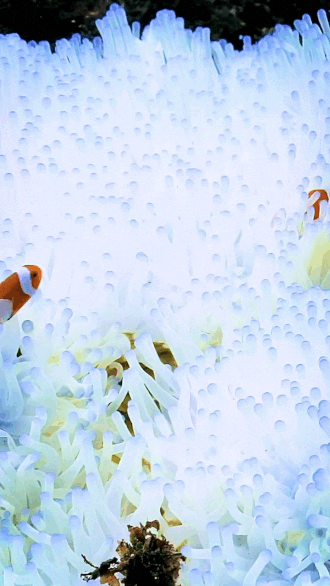
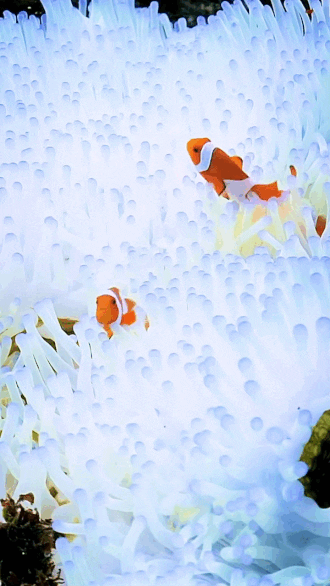
clownfish swimming through bleached anemones | jonoallenphotography on ig
if you have a moment and are mentally able, please read the text accompanying the original instagram post, located at the source link above, and this short article by The National Oceanic and Atmospheric Administration. if not, please just share it around.
it's true this video is strikingly beautiful, but the truth behind it is, in my opinion, necessary for everyone to know.
#stim#clownfish#coral reefs#climate change#sfw#orange#black#white#blue#animals#global warming#marine life#sea creatures#fish#underwater#cnidarians#sea anemones#oceans#coral bleaching#climate change awareness#global warming awareness#ishy gifs#postish
311 notes
·
View notes
Text
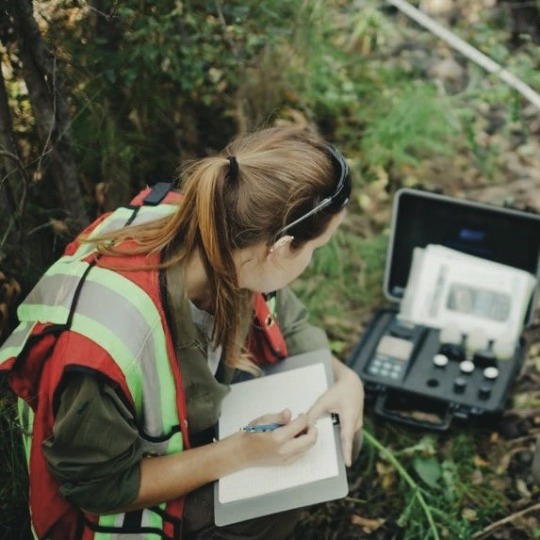

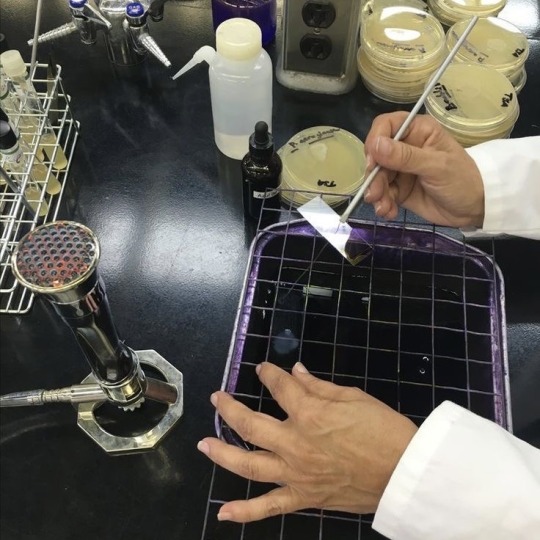


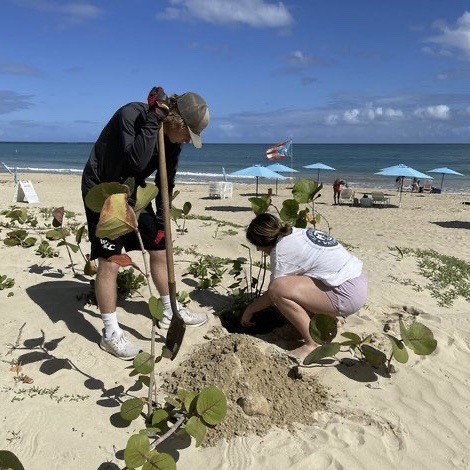



dream job 🌱🪵🌎🌈
#environmental studies#environmental science#conservation#coral bleaching#marine biology#forestry#rock climbing#environment#earth#girlblogging#girlblog#girlblogger#it girl#that girl#dream job#jane goodall#zoologist#geology#crystals#studying#studyblr#study motivation#academic weapon#academic motivation
117 notes
·
View notes
Text
Can corals be saved? As record ocean heat threatens corals off Florida and across the globe, conservationists are shifting their strategy. (Washington Post)
With milk crates of corals in hand and scuba tanks strapped to their backs, Sam Burrell and his team disappeared under the water’s choppy surface. Heavy, breaking waves crashed against the charter boat anchored miles off the coast.
With each breath they let out, they descended beneath the surface and felt a sense of relief: On this November morning, they were finally returning hundreds of corals pulled out of the water earlier in the year after one of the hottest marine heat waves on record threatened to wipe them out. For months, the corals sat in temperature-controlled tanks in the shadow of the gulf’s bay until the waters were cool enough for them to go back— and though conditions weren’t ideal, this was that moment.
Groups like Burrell’s had been prepared to do whatever it took to save the corals — even if that meant evacuating them each summer. But they now realize they need to radically shift their approach.
With record ocean temperatures threatening another dire summer, the National Oceanic and Atmospheric Administration and coral restoration groups are shifting their efforts to better keep up with the warming climate. The goal is clear: Find the survivors from last summer’s heat wave and focus on restoring areas where the species will have the best chance when heat strikes again.
How they execute the new plan could mean the difference between saving what’s left on Florida’s 360-mile-long coral reef and another summer of catastrophic loss. Already, some coral experts have questioned how far humans will go to keep corals alive in an environment that struggles to sustain them. At risk is the very future of these corals, a species that serves as an underwater city to more than 7,000 other marine plants and animals, survived prehistoric mass extinctions and outlived the dinosaurs. The collapseof coral in the Keys would also have an economic ripple effect: Thousands of people could lose jobs related to a key part of regional tourism.
Corals thrivein water temperatures between 73 and 84 degrees Fahrenheit, according to NOAA. But last summer, shallow-water temperatures in the lower Keys reached a walloping 101 degrees Fahrenheit. Other places simmered in the mid to high 90-degree range.
As bleaching events increase in severity and frequency, it becomes harder for certain corals to bounce back. Last summer, corals in the Keys endured the hottest ocean temperatures on record, according to NOAA’s Mission: Iconic Reefs, a coalition of public and private groups. This heat streak has lasted more than a year: NOAA and the International Coral Reef Initiative just confirmed bleaching-level heat stress in every corner of the ocean.
Robyn Mast, a Key West reef restoration associate at CRF, recalled an emotional scene when she saw the havoc last year’s heat wrought on the species. Entire stretches looked like they were covered in a fresh layer of snow. The corals, full of color just days before, were bleached. As she dove closer, she realized many of the colorful coral left were burned to death: They had died so quickly that they didn’t even have the chance for color to drain. Temperatures were so hot that coral tissue melted from its skeleton.
5 notes
·
View notes
Text
Underwater Climate Refuges: Designing Technological Sanctuaries to Protect Marine Biodiversity from Warming
As our oceans face unprecedented warming due to climate change, the urgency to protect marine biodiversity has reached a critical point. With ecosystems and species at risk, innovative solutions are emerging to preserve our oceans’ richness for future generations. Among these transformative ideas are underwater climate refuges—cutting-edge technological sanctuaries designed to shield marine life…
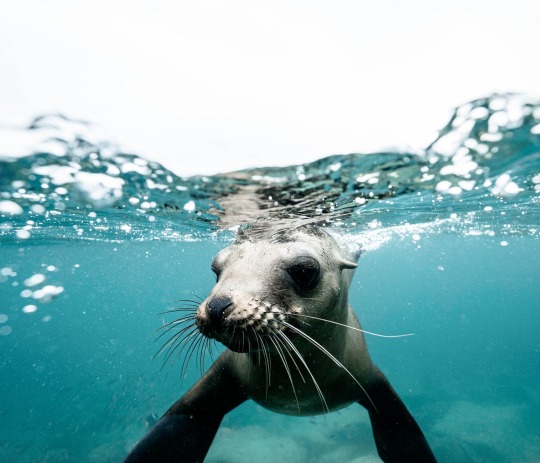
View On WordPress
#3D Printing#autonomous robots#climate change#climate change action#conservation#coral bleaching#coral reef restoration#eco-friendly#ocean conservation#ocean ecosystems#ocean health#ocean warming#sustainability
22 notes
·
View notes
Text
Marine conservationists warned Thursday that Australia's Great Barrier Reef may be suffering its worst-ever coral bleaching event amid record ocean heat fueled by the worsening climate emergency.
The Australian Marine Conservation Society (AMCS) said that bleached corals have been found at depths of up to nearly 60 feet, and "some corals are starting to die as they face record marine heatwaves."
"Corals bleach when they are stressed by warmer waters for an extended period of time—during marine heatwaves, which are driven by climate change," AMCS explained. "They expel the algae that inhabit them, which is their main energy source and they starve, sometimes to death."
Data collected from aerial surveys shows that 75% of the Great Barrier Reef has bleached during the current event, which the U.S. National Oceanic and Atmospheric Administration warned last month is likely to be "the worst bleaching event" ever observed in the world.
5 notes
·
View notes
Text
Mermay Day 8: Dystopian

Today’s Mermay is based around the phenomenon of coral bleaching, where rising temperatures and other stressful factors expel zooxanthellae algae from corals, causing them to turn white and leaving them vulnerable to starvation, destroying a vital part of the ocean’s ecosystems. Climate change is often pointed to as a cause of rapid coral bleaching, with mass bleaching events impacting enormous percentages of coral environments, including Australia’s Great Barrier Reef.
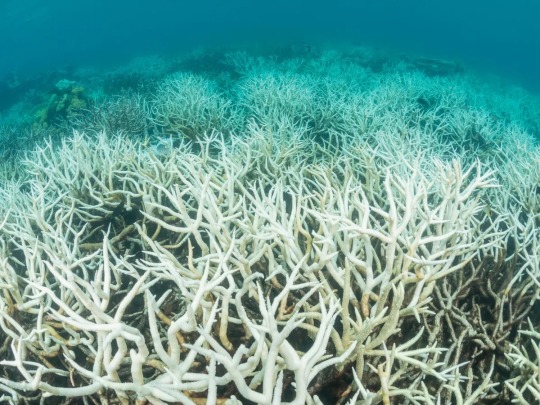
#mermay#mermay 2023#mermay day 8#coral#coral bleaching#marine biology#environmentalism#climate change#coral reef#mermaid
28 notes
·
View notes
Text
#ocean warming#climate change#sea level rise#ecosystem degradation#seafood production#coral bleaching
13 notes
·
View notes
Text
Coral reefs in peril from record-breaking ocean heat - Technology Org
New Post has been published on https://thedigitalinsider.com/coral-reefs-in-peril-from-record-breaking-ocean-heat-technology-org/
Coral reefs in peril from record-breaking ocean heat - Technology Org
Record breaking marine heatwaves will cause devastating mass coral bleaching worldwide in the next few years, according to a University of Queensland coral reef scientist.
Corals – illustrative photo. Image credit: Pixabay (Free Pixabay license)
The alarming finding is the result of an international study led by UQ’s Professor Ove Hoegh-Guldberg of UQ’s School of the Environment, who is currently attending the COP28 climate change meetings in Dubai.
“We were shocked to find heat stress conditions started as much as 12 weeks ahead of previously recorded peaks and were sustained for much longer in the eastern tropical Pacific and wider Caribbean,” Professor Hoegh-Guldberg said.
“Historical data suggests the current marine heatwaves will likely be the precursor to a global mass coral bleaching and mortality event over the next 12 to 24 months, as the El Niño phase of El Niño-Southern Oscillation or ENSO continues.
“Across July 2023, Earth experienced its warmest days on record since 1910, as well as the warmest month ever recorded for sea surface temperatures.
“This puts immense pressure on vital but fragile tropical ecosystems, such as coral reefs, mangrove forests, and seagrass meadows.
“For example, a coral reef in the Florida Keys called Newfound Harbor Key accumulated heat stress almost 3 times the previous record and it occurred 6 weeks ahead of previous peaks.”
Professor Hoegh-Guldberg said the findings come at a critical point in protecting global biodiversity, with commitment to climate change mitigation slipping in many nations.
“The latest environmental information indicates that we’re well off-track when it comes to keeping global surface temperatures from reaching a very dangerous condition by mid to late this century,” he said.
“Frankly, we’re hurtling in the opposite direction.
“Compounding this is the fact these devastating impacts appear to be rolling into a vast record-breaking global event.”
Professor Hoegh-Guldberg said that without serious and swift action, the persistence of coral reefs beyond the next few decades is in serious jeopardy.
“Our study shows that ENSO is a major determinant of the fate of the world’s coral reefs,” he said.
“Rising sea temperatures, coupled with other stressors such as ocean acidification and pollution, have severely weakened their resilience.
“This puts coral reefs and a quarter of the ocean’s biodiversity at serious risk of annihilation.”
Professor Hoegh-Guldberg said efforts to introduce of heat-tolerance genes into the natural coral population have shown promise, but the reality of scaling these efforts remains logistically challenging.
“Given the complex and interconnected nature of marine ecosystems such as coral reefs, a comprehensive approach is necessary for mitigating the impacts of changing oceanic conditions,” he said.
“The importance of reducing our emissions is underscored in our findings, where massive changes to oceanic warming are set to destroy coral reefs and many other ecosystems.
“With this in mind, there are extremely tough discussions underway at the COP28 climate meetings.”
This research is published in Science.
Source: The University of Queensland
You can offer your link to a page which is relevant to the topic of this post.
#2023#approach#biodiversity#Biology news#change#climate#Climate & weather news#climate change#comprehensive#coral bleaching#coral reef#coral reefs#corals#data#direction#earth#Ecosystems#el niño#Emissions#Environment#Environmental#Experienced#genes#Geoscience & Environment news#Global#Heat#Impacts#it#LED#Link
2 notes
·
View notes
Link
“The northern and central Great Barrier Reef have recorded their highest amount of coral cover since the Australian Institute of Marine Science began monitoring 36 years ago.
Published [in August 2022], the group’s Annual Summary Report on Coral Reef Condition for 2021/22 shows another year of increased coral cover across much of the Reef—with increases of 7-9 percent in several areas.
In the 87 representative reefs surveyed between August 2021 and May 2022 with a Long-Term Monitoring Program, average hard coral cover in the region north of Cooktown increased to 36% (from 27% in 2021) and to 33% in the central Great Barrier Reef (from 26% in 2021)...
AIMS CEO Dr. Paul Hardisty said the results in the north and central regions were a sign the Reef can recover, but warns about the increased frequency of coral bleaching events, which are a coral’s response to stressful conditions such as heat. A condition from which they still can survive...
“The 2020 and 2022 bleaching events, while extensive, didn’t reach the intensity of the 2016 and 2017 events and, as a result, we have seen less mortality,” he said in a release.
These latest results demonstrate the Reef can still recover in periods free of intense disturbances.” -via Good News Network, 8/4/22
147 notes
·
View notes
Text
While we know we cannot save every coral; we are focusing on individual corals that represent unique genetic lines that are thought only to exist in certain National Parks.
—Ilsa Kuffner, a USGS research marine biologist
3 notes
·
View notes
Text
Waters Around Florida Are So Hot, Scientists Are Removing Coral to Save Them
With the recent, massive heatwaves around the northern hemisphere, there’s more than just human suffering when the temperatures get that hot.
In southern Florida, the ocean temperatures have reached a shocking 101º F (38.3 C) or higher, the highest recorded. In addition to feeling like a hot tub on a hot day, the extreme ocean temperatures are wreaking havoc on coral reefs, with many of them…
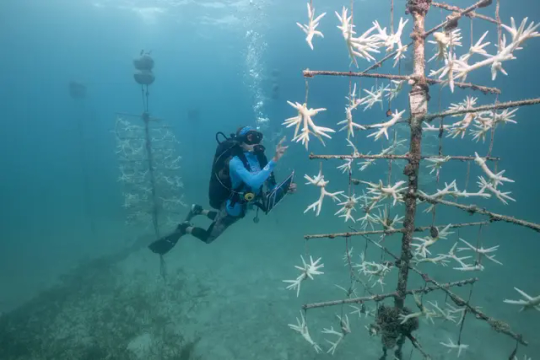
View On WordPress
#Climate change#coral bleaching#Florida Keys#Florida Keys climate change#ocean temperatures#record temps#The Coral Restoration Foundation
3 notes
·
View notes
Text
Corals are bleaching in every corner of the ocean, threatening its web of life. (Washington Post)
First around Fiji, then the Florida Keys, then Australia’s Great Barrier Reef, and now in the Indian Ocean. In the past year, anomalous ocean temperatures have left a trail of devastation for the world’s corals, bleaching entire reefs and threatening widespread coral mortality — and now, scientists with the National Oceanic and Atmospheric Administration and International Coral Reef Initiative say the world is experiencing its fourth global bleaching event, the second in the last decade.
At least 53 countries and local regions have experienced mass bleaching across the Atlantic, Pacific and Indian oceans. Bleaching — which occurs when stressed coral turn white after expelling symbiotic algae that provide food and color — must be confirmed within each ocean basin to be declared a global bleaching event.
Derek Manzello, an ecologist and head of NOAA’s Coral Reef Watch program, said the frequency and severity of bleaching events has increased since the early 1980s. That intensity and regularity has also ramped up in the last two decades.
“Now we’re just reaching a point in this warming cycle where these events are becoming so extreme and they’re just getting worse and worse and worse,” Manzello said.
According to the Global Bleaching Event Index, which is based on sea surface temperatures data, more than 54 percent of all the reef areas on the planet have experienced bleaching-level heat stress in the past 365 days. And that number is increasing by 1 percent each week, Manzello said. For context, during the worst global coral bleaching event on record between 2014 and 2017, the Global Bleaching Event Index peaked at 56 percent.
“Right now, we’re almost equal with the worst global bleaching event on record in terms of spatial extent,” Manzello said. It’s possible the overall percentage of reefs experiencing heat stress will surpass the previous record in the next few weeks.
“This should be a global wake-up call. The fact that corals are bleaching in each ocean basin essentially simultaneously,” Manzello said. “And more than half the reefs on the planet have basically experienced bleaching-level heat stress in the last year.”
5 notes
·
View notes
Text
I did some research, and the oceans main problems are pollution, acidification, overfishing, and, of course also global warming. All of the above cause animals and plants to die. For example, 60% of the Great Barrier Reefs corals at Australias coastline has bleached due to global warming in 2022, most of them died soon after bleaching. This causes a lot of animals to die, and reduces the natural biodiversity, as a consequence it also affects a human beings life in many ways. Just something to think about.😭🐠🐢
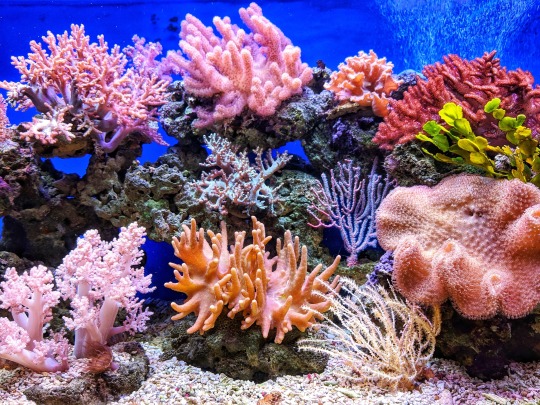
This is what they are supposed to look like.

And this is what they look like after bleaching.
3 notes
·
View notes
Text
Ocean Temperatures Soar in Florida
Ocean temperatures are rising in Florida, threatening coral, contributing to humidity, and keeping the air from cooling at night.
According to the World Meteorological Organization, almost every day last week unofficially broke records for high temperatures. Japan reported that the global average temperature on Friday was half a degree (F) warmer than its past record hottest day, which was in…
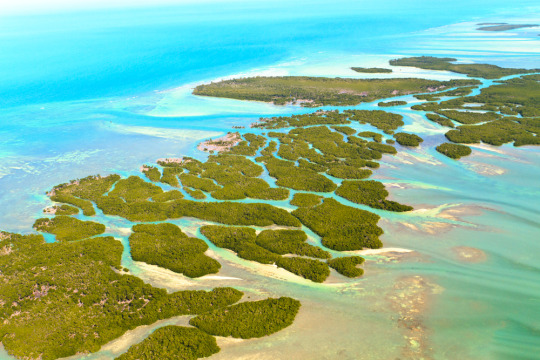
View On WordPress
#coral bleaching#Florida#heat wave#national weather service#NOAA#ocean temperatures#water tempertures
2 notes
·
View notes
Text
Y'all, the Florida reefs are nearly 100% bleached or dead right now. Water temperatures are hitting the mid to upper 90s, as high as 101F in Miami. This is bad. We are seeing a combination of El Nino conditions on top of warming ocean surface temperatures due to climate change creating a marine heat wave.
Nurseries still have live coral, and deeper water reefs (where the water is cooler and UV is less) are in better shape. Many people are working hard to preserve these reefs, but this is bailing water in a sinking boat. We NEED to reduce carbon emissions; this is what stops the boat from sinking. It is NOT too late to save corals and support recovery but it is time to stop screwing around and do it.
#coral reef#climate crisis#climate change#coral bleaching#florida reef tract#marine invertebrates#oceans#ocean#sea animals#global warming
3 notes
·
View notes